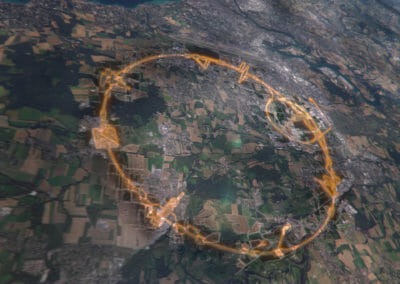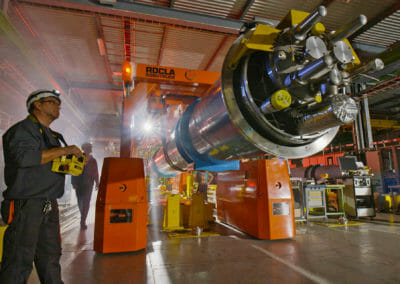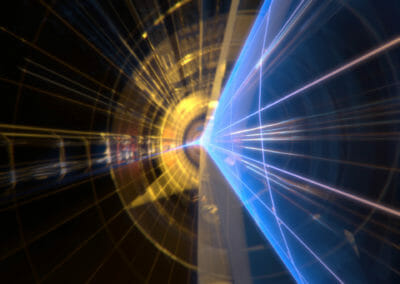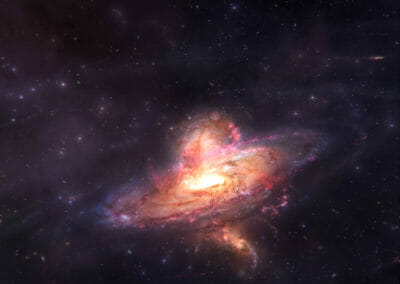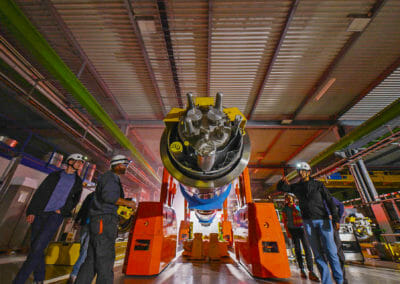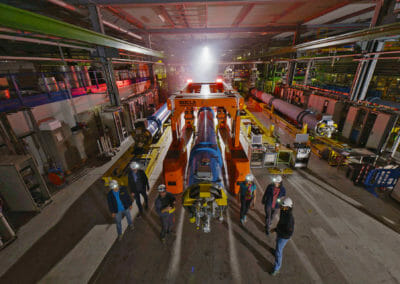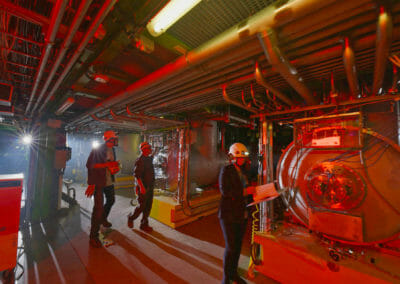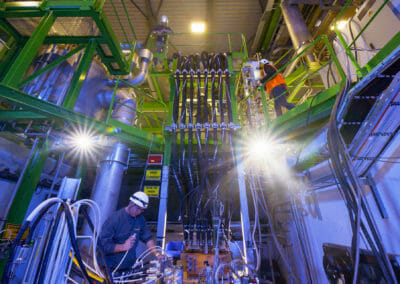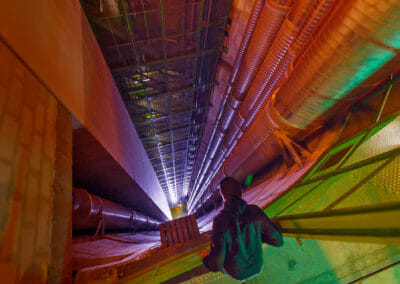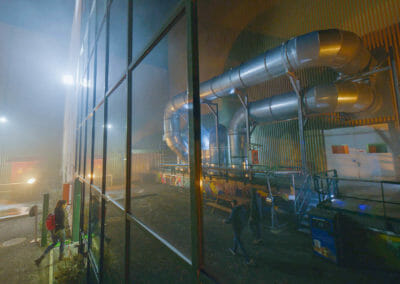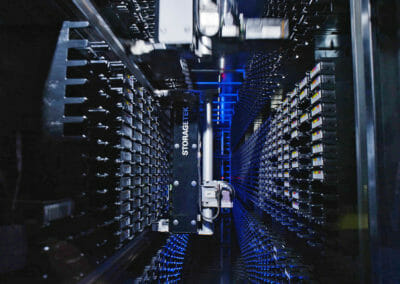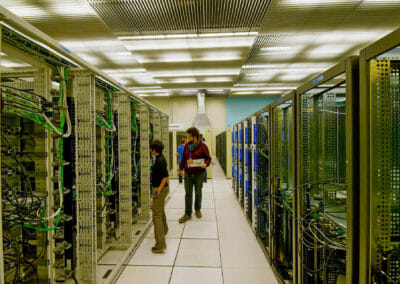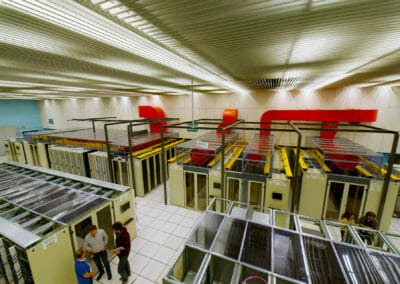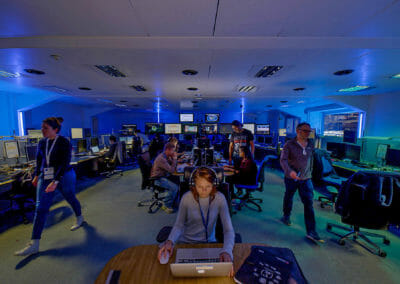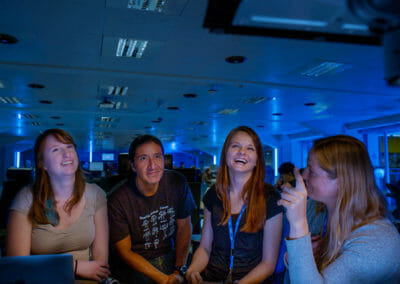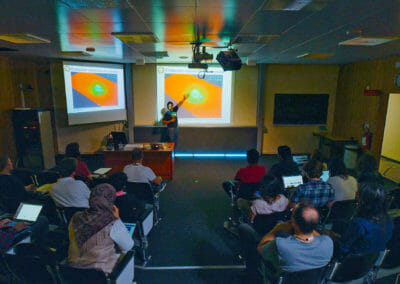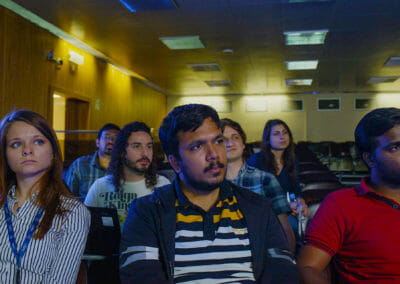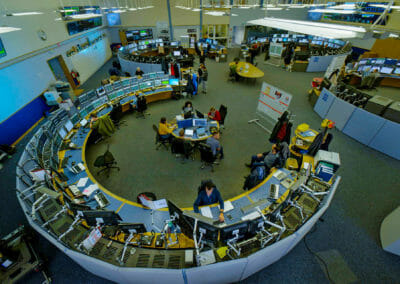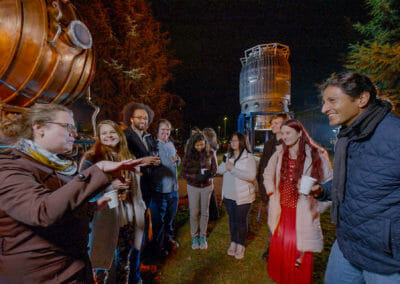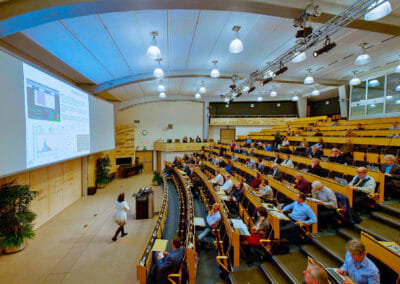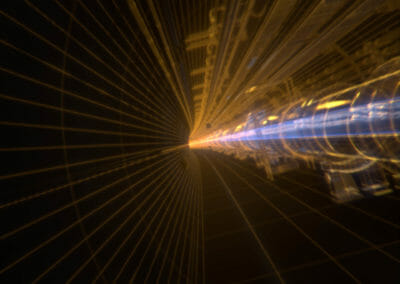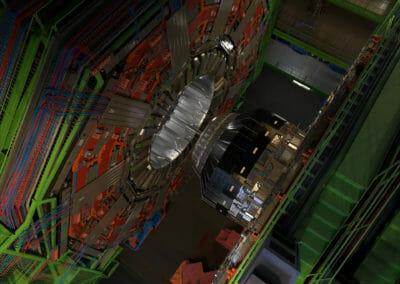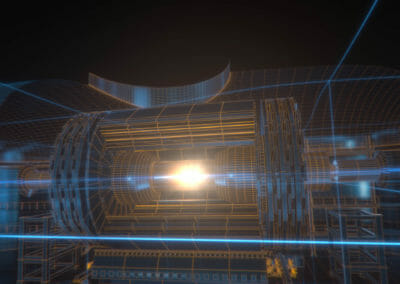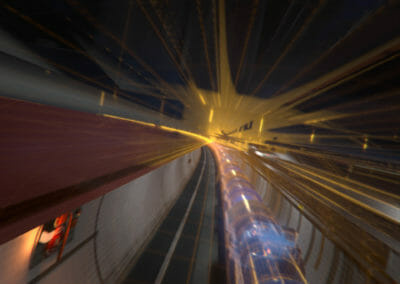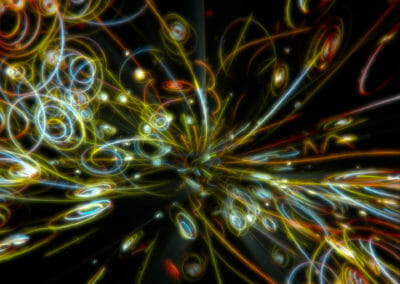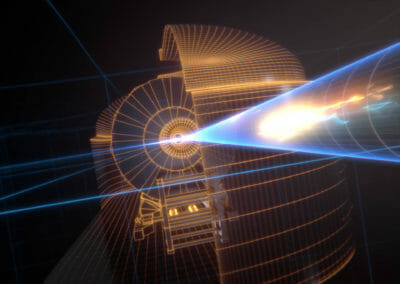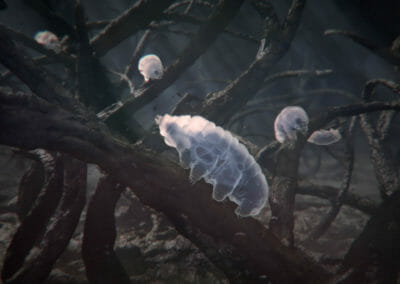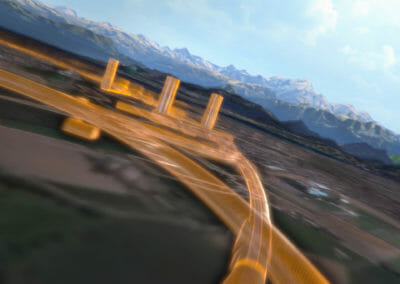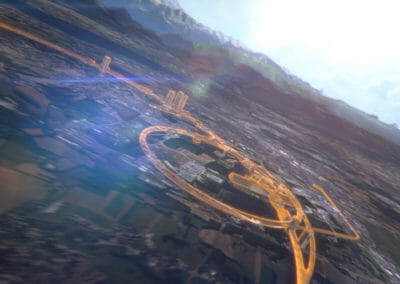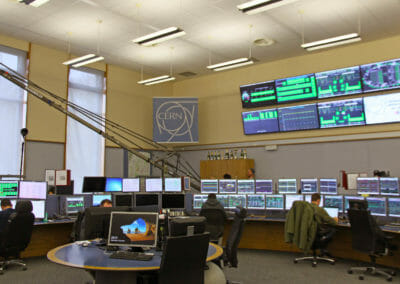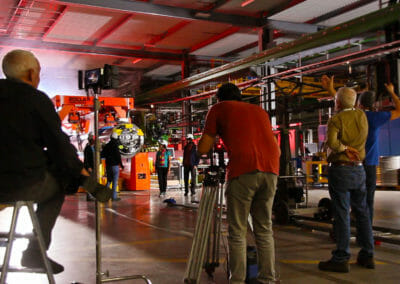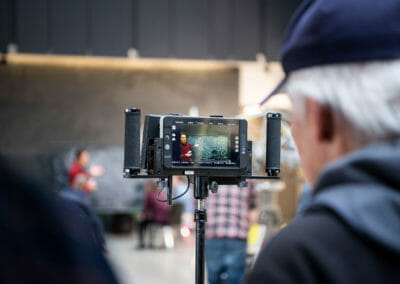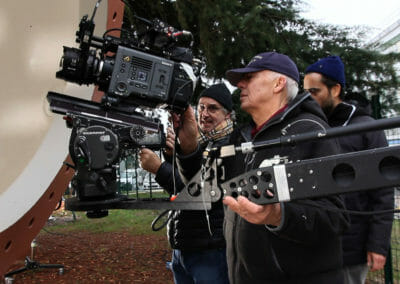Secrets of the Universe
About the Film
Secrets of the Universe captures the excitement and groundbreaking science unfolding at the Large Hadron Collider at CERN–one of the largest scientific enterprises ever undertaken by humankind.
Synopsis
Galileo looked to the heavens, expanding our vision beyond our own planet. Einstein sought to understand the universe with math and a chalkboard and was perplexed by activity at the quantum level. The truth remains—there is still so much we do not know.
In Secrets of the Universe, narrator and featured personality, renowned physicist Manuel Calderon de la Barca Sanchez gives his insight on the nature of forces and matter and on the pursuit of science.
Secrets of the Universe is a sweeping, 3D giant screen adventure that immerses audiences in the greatest mysteries of our time—puzzles spanning from the infinitesimal to the infinite—and introduces the brilliant minds seeking to unravel them.
The answers await at the collision points of intellect and imagination, of theory and experiment, of the tiniest particles and the most powerful forces in the universe.
Travel with scientist Manuel Calderon de la Barca Sanchez as he journeys to the largest machine ever built, the greatest scientific instrument ever created, the Large Hadron Collider (LHC). There, he joins a global team working to uncover another amazing breakthrough in this new world of technology-driven physics. We get an inside look at the machine and come to understand just what it means to do science, teaming up for the flag of humanity to solve the universe’s greatest mysteries.
We don’t stop with the Large Hadron Collider, though. The machines we’ve built are as diverse as the secrets we’re looking for, and the people looking for them. We travel to the Laser Interferometer Gravitational Observatory (LIGO), the amazing project that recently confirmed Einstein’s century old prediction of the existence of gravitational waves. Humanity is at the edge of unprecedented scientific discovery, and we can all be a part of it!
In Theaters—(where to see Secrets of the Universe)
Official film site: secretsoftheuniversefilm.com
For theater locations: Where-to-see Secrets of the Universe
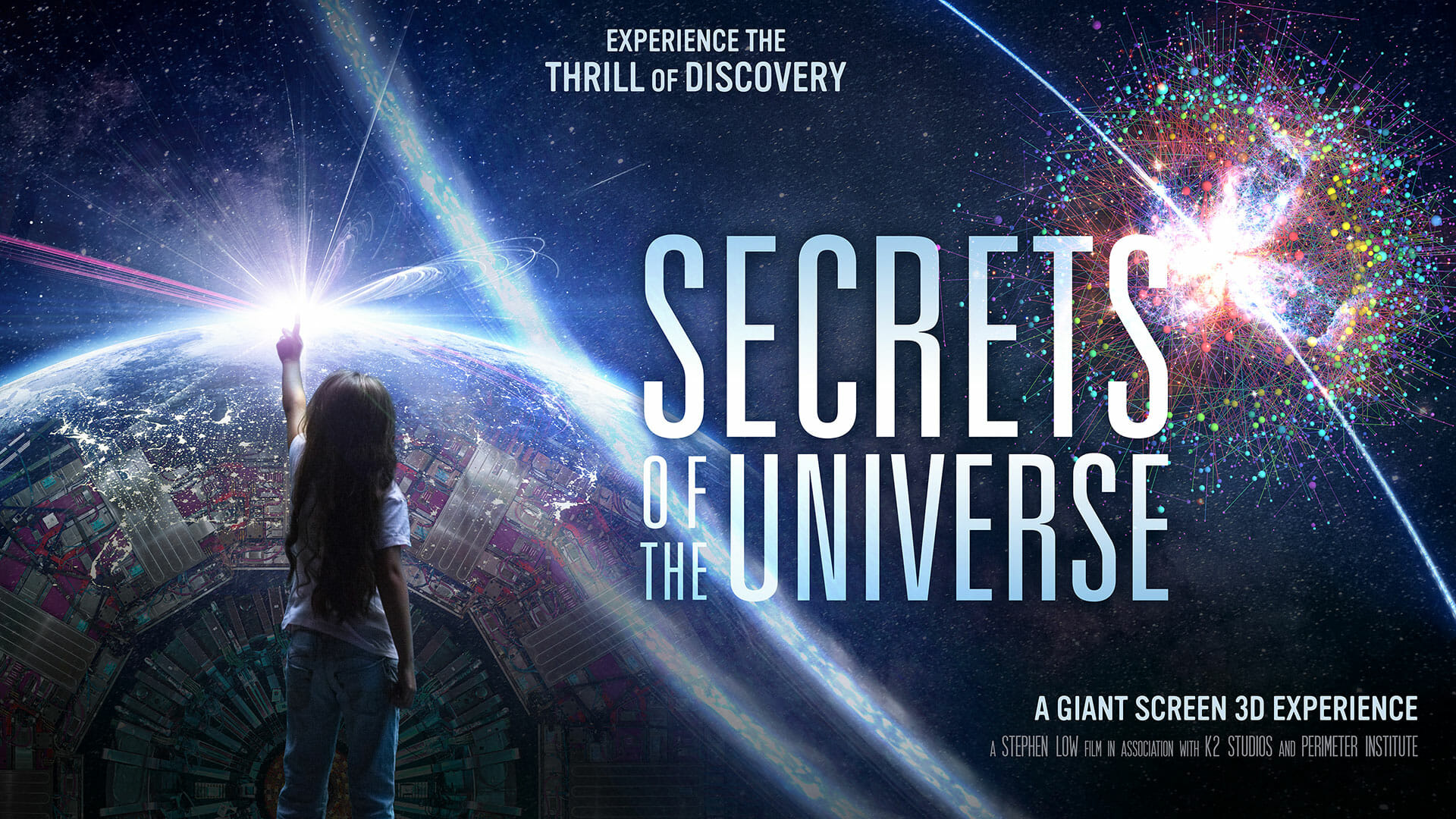
Trailer
Theme
The Big Question
What is the universe made of? The Large Hadron Collider (LHC) studies the fundamental particles that comprise all forms of matter. The LHC is the world’s most powerful particle accelerator. Located underground along the France-Switzerland border near Geneva, it took 10 years for the European Organization for Nuclear Research (CERN) to build. The LHC consists of a 27-kilometre circular tunnel surrounded by very powerful superconducting magnets, designed to engineer collisions between beams of particles at speeds approaching the speed of light (300,000 km/s).
HOW IT WORKS
Inside the accelerator, two high-energy particle beams travel at close to the speed of light before they are made to collide. They are guided around the accelerator ring by a strong magnetic field maintained by superconducting electromagnets, which must be chilled to ‑271.3°C – a temperature colder than outer space – using liquid helium.
Thousands of magnets of different varieties and sizes are used to direct the beams around the accelerator, bending and focusing them as necessary to increase the chances of collision. The particles are so tiny that the task of making them collide is like firing two needles 10 kilometres apart with such precision that they meet halfway. The beams inside the LHC are made to collide at four locations around the accelerator ring, corresponding to the positions of four particle detectors – ATLAS, CMS, ALICE, and LHCb.
WHY IT MATTERS
The LHC’s Higgs discovery provides the missing piece to the Standard Model of particle physics. The Standard Model explains how the basic building blocks of matter interact, governed by four fundamental forces: the strong force, the weak force, the electromagnetic force, and the gravitational force. It has been an incredibly successful model of the subatomic world, explaining almost all experimental results and precisely predicting a wide variety of phenomena. But it had a glitch.
Some of the particles in the Standard Model emerge without a mass, while experiment shows them to have mass. Robert Brout, François Englert, and Peter Higgs resolved this problem with a theory of an invisible field, now called the “Higgs field,” that gives these particles mass when they interact. The LHC’s experimental discovery of the associated Higgs particle is a major step for the Standard Model.
THE PEOPLE
The LHC is a massive collaboration, involving over 10,000 scientists from hundreds of universities and laboratories in more than 70 countries. This includes not only those responsible for the design, construction, and operation of the collider, but also those that run the experiments and those that analyze the resulting data. Some of the key figures include:
Fabiola Gianotti, Director-General
Frédérick Bordry, Director for Accelerators and Technology
Eckhard Elsen, Director for Research and Computing
The Production
Production Notes
Initial production work for the project began in late 2014 with research and shooting at the CERN super-collider facility which sits astride the Franco-Swiss border near Geneva. The film premiered at the National Air and Space Museum in Washington, D.C. in 2019.
About the Film
- Production Format: Digital
- Duration: 45 min.
- Released date: 2019.
- Produced by: Stephen Low Productions Inc.
- Distributed by: K2 Communications Inc. / The Stephen Low Company
- Available for license: IMAX Digital
- Official film site: https://secretsoftheuniversefilm.com
Credits
- Writtten and Directed by Stephen Low
- Directory of Photography: Tristan Breeuwer
- Featuring: Manuel Calderón de la Barca Sánchez
- Executive Producers: Mark Kresser, Robert Kresser, Pietro L. Serapiglia
- Produced by: Stephen Low
- Co-produced by: Pietro L. Serapiglia
- Edited by: James Lahti
- Lead project consultant: Greg Dick
- Executive in charge of production: Dougal Caron
- Line Producer: Michel Chauvin

